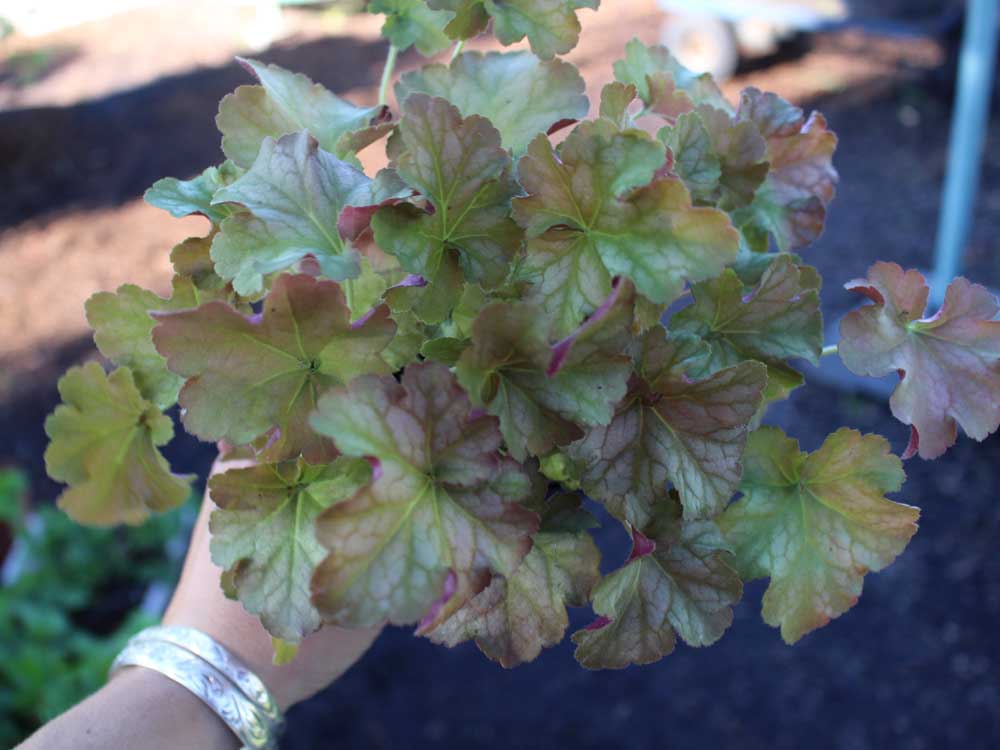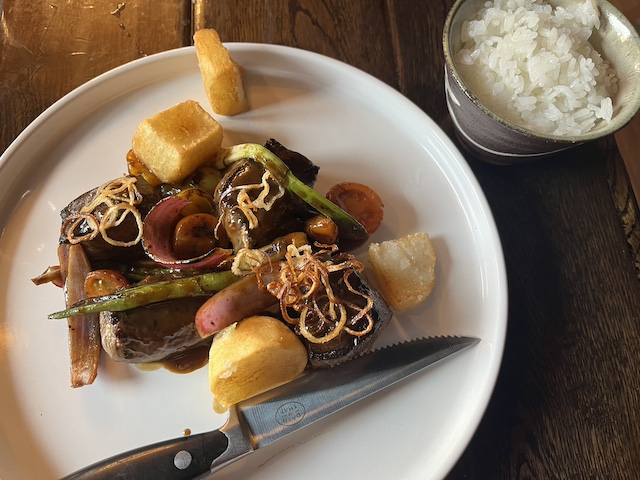Shade-tolerant plants are varied and numerous
Published 12:00 am Tuesday, August 23, 2016

- Laura Kessinger / For The BulletinCoral bells pinot gris
The deeper into shade our gardens go, the harder it can be to find plants that will thrive there. The list of sun-loving plants seems endless by comparison. But even after meeting the other challenges of High Desert gardening (dry, hot summer days and below-zero winters), it might surprise you to see just how varied, numerous and impressive the array of shade-tolerant plants here can be.
During the peak of summer heat, gardening in the shade can be especially rewarding — not just for the added diversity of plants we can grow there, but also because the very work of gardening in the shade can be so enjoyable. Protected from the assault of midday rays, we can toil away more comfortably in the dappled light and cooler shadows.
But what exactly is shade? And how will you know how much shade a specific site has to offer?
“Shade is not the absence of light, but a lesser quantity and perhaps quality of sunlight,” said Harriet L. Cramer in her book, “A Garden In The Shade.” “The opposite of shade isn’t sun as much as it is full sun. For a number of plants,” said Cramer, “morning sun and afternoon shade is an almost perfect situation.”
Although some are more tolerant of a greater range than others, all plants need a specific amount of light. Too little means plants become leggy as they stretch for light or refuse to flower, unable to produce the energy needed to sustain themselves, let alone power a bloom cycle. When plants receive too much light or when too intense, foliage can scorch and burn, leading to death if repeatedly stressed.
To determine exactly how much shade an area has, simple observation can often give you the most detailed idea. Take notes — and pictures even — at regular intervals throughout the day.
Another way to measure the amount of shade or sunlight an area receives is to use a light meter (many brands available are under $20). Placed in the ground in any location, the meter will absorb light throughout the day, determining the amount of sun or shade you’re working with.
There are also several ways to manipulate, add or reduce shade. Mimic natural woodlands by layering bulbs, perennials, shrubs and trees. Add shade by installing landscaping or hard-scaping features. Or reduce the amount of shade by trimming lower branches or narrowing the profile of trees and shrubs. You might also consider hiring an arborist to thin or raise the canopies of mature trees.
It’s not just about the duration of time with or without sunlight, it’s also about the quality of shade and the strength of sunlight or solar intensity. Four hours of morning spring sunlight is much less intense, of course, than four hours in the afternoon in August.
Classifications
Plants, as well as garden locations, are generally classified as being full-sun (requiring or providing more than six hours of direct sunlight), part sun (four to six hours), part shade (two to four hours), or full shade (less than two hours). Picturing shady areas in nature — a forest floor for instance — and the way sunlight filters through the canopies and understories of trees can help you begin to understand the various degrees of shade your site offers.
Once you know how much light/shade you actually have, you can shop for plants with those requirements. Nearly all plant tags will clearly classify the amount of light a certain plant does best in, and local nurseries can give even more precise advice. According to Eastside Gardens in Bend, many full- and part-sun plants can actually do better here in a part-shade location.
“If a plant is a true shade plant, being in full sun for any length of time from about noon to about 6 p.m. in the summertime is a no-no,” said John Post, a plant expert at Cascade Garden Center in Bend. “Most (shade-tolerant) plants will also need high levels of moisture and also a more fertile soil,” he advised.
Options abound
As I toured these and other local garden centers recently, I was honestly shocked by the sheer variety of shade-tolerant trees, shrubs and perennials available.
There were deciduous ornamental trees such as Japanese maple and soft-needled evergreen trees such as dwarf Korean fir and the taller (but also slow-growing) alpine fir.
Shrub options were plentiful from Oregon grape to serviceberry, including stand-outs such as the yew, with its highly attractive foliage and almost artificial-looking red berries. Deciduous shrubs included the yellow and red twig dogwoods, which, even when bare look stunning in winter. Flowering shrubs in a rainbow of bloom colors included the black lace elderberry, with delicate, deep purple foliage, pink flowers and edible purple berries in fall. Rhododendrons are another great shrub, available in sizes ranging from the daintiest-leaved dwarfs to the large, broad-leaved specimens.
The wide array of perennials included astilbe and false spirea, with bloom colors ranging from white and peach to purple and fuchsia, creeping ground covers such as vinca minor, with waxy green leaves and purple flowers and a favorite of Northwest gardeners, and bleeding heart. (I counted at least five varieties with blooms from white to deep pink.)
My personal favorite is coral bells, available locally in an astonishing variety of cultivars (well over 12), with fancy foliage ranging from the yellowish-green and pink pinot gris to green and amber sweet tea and Southern comfort, all the way to the deep purplish-black midnight bayou. Pair with a group of a complementary-colored plants or use dark or lighter-colored varieties to add contrast to otherwise monotonous beds of green.
“Ferns are your best bet for deep shade,” said Post, pointing out deer fern, licorice fern and the silver-leaved Japanese painted fern, metalicum.
By layering trees, shrubs and perennials, and using ground covers and bulbs at their feet, with the wide array of shade-tolerant plants available it can be easier than you may have thought to create a gorgeous garden in the shade. And with the stark contrast between different cultivars of even the same species, when it comes to color, form and texture, even a single type of plant, when planted in groups in a single area — fern or coral bells, for instance — can offer a broad scope of interest and stunning results.
— Reporter: laurakessinger@gmail.com






